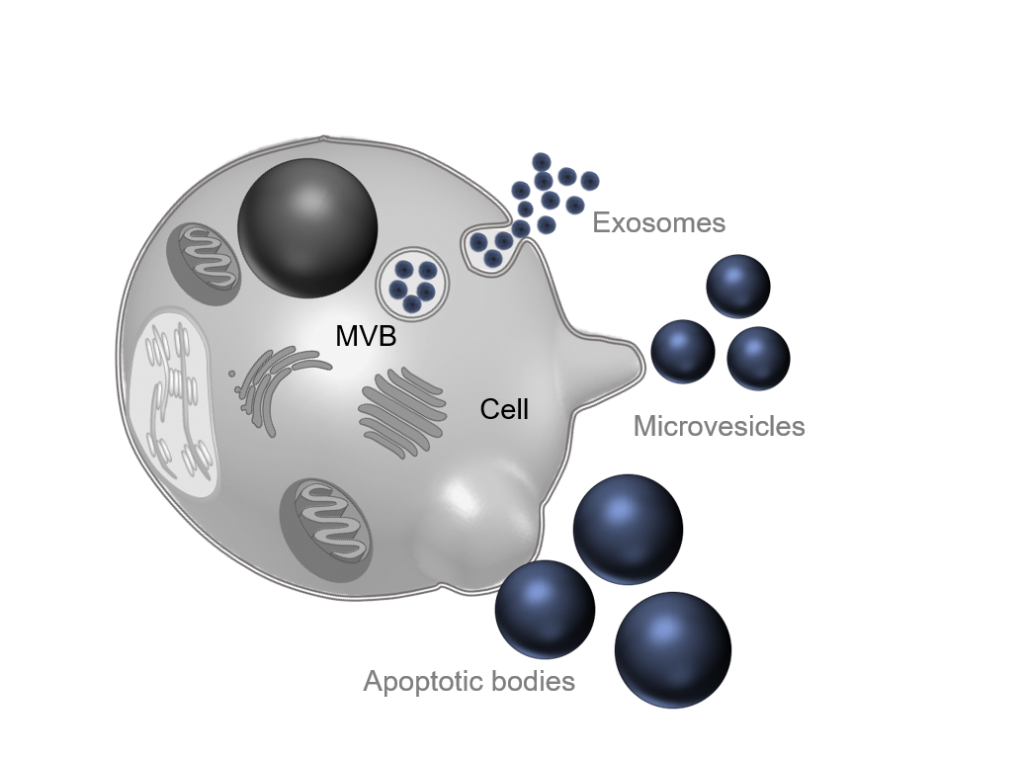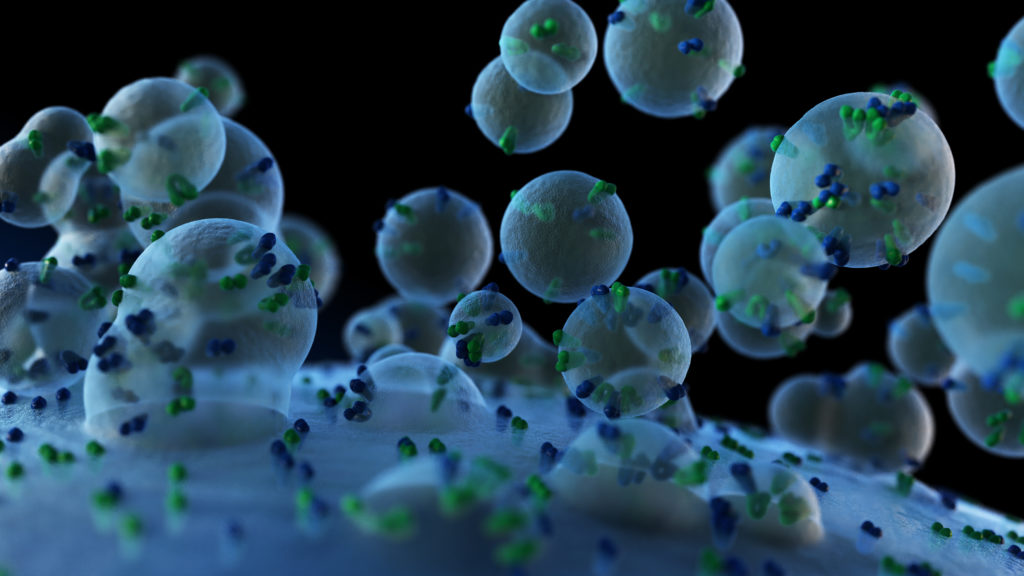NK EVs
Functional and Bioactive SC21 EV’s
Extracellular Vesicles contain biomolecules, such as RNA, proteins, lipids and carbohydrates, which play an important role in cell communication.
Recent findings have ignited huge interest in EVs for their role in intercellular communication, pathogenesis, and as possible reservoirs of biomarkers. This system has been referred to as the Bio-internet, a cellular information exchange system.
SC21 lab studies the effect of extracellular vesicles on immunomodulation, regeneration pathways, and uses novel methods for extracellular vesicle isolation from cell cultures and biological fluids.
EVs provide a new era of cellular-derived therapies in a cell-free-cell therapy manner.
What are Extracellular Vesicles
Extracellular Vesicles are composed of three major classes :
- Exosomes (30 – 100 nm) originating from multi vesicular bodies (MVB).
- Microvesicles (100-500 nm) directly bud from the plasma membrane.
- Apoptotic bodies (500 nm – 5µm) are a population of extracellular vesicles secreted during cell death by apoptosis.
The biological function of EVs is to maintain cellular and tissue homeostasis by transferring critical biological cargos to distal or neighbouring recipient cells.
The use of extracellular vesicles (EVs) as cell-free therapy is a promising approach to stimulate tissue regeneration, immunomodulation, and neuroprotection.


Mesenchymal Stem Cell-derived EVs
With the current breakthroughs in scientific and clinical research into Mesenchymal Stem Cell EVs, the opportunity has arisen for the development of high-impact biopharmaceuticals for the delivery of therapeutic molecules to our body’s cells.
Pre-clinical and underway clinical studies indicate that the Data-Rich Cargo of MSC EV’s (the proteins, nucleic acids, bioactive lipids, metabolites, and mitochondria) within MSC EV’s can improve the function of aging, injured or diseased cells, tissues and organs.
As an ideal vehicle for delivery, the lipid membrane of EVs serves not only to protect proteins and RNA from degradation but also allows EVs to reach cells in parts of the body that many drugs cannot. EVs are able to cross the blood-brain barrier and also penetrate solid tissue masses.
